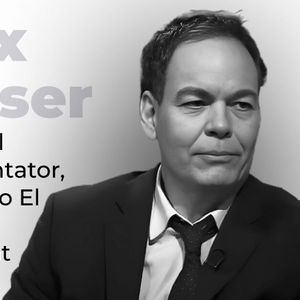Christine Lagarde, president of the European Central Bank (ECB), has called on policymakers to strengthen oversight of stablecoins that fall outside the European Union’s “robust” Markets in Crypto-Assets (MiCA) framework. EU lawmakers should intervene if an entity covered by the landmark Markets in Crypto-assets regulation (MiCA) works with a non-EU entity to issue stablecoins, Lagarde said Wednesday at the ninth annual European Systemic Risk Board conference. She said these issuers should be banned from operating in the EU unless there were “robust equivalence regimes” in place in their home markets. She has since argued that these measures, which, she said, introduce a “clear cut off that demonstrates that EU operators are authorized,” should mean that EU investors are not taking on incremental redemption risk and that issuers will be fully reserved by their tokens. “In the event of a run, investors would naturally prefer to redeem in the jurisdiction with the strongest safeguards, which is likely to be the EU, where MiCAR also prohibits redemption fees,” Lagarde said. “But the reserves held in the EU may not be sufficient to meet such concentrated demand.” US stablecoin rules could reshape Europe’s digital currency plans Stablecoins are cryptocurrencies engineered to keep their value, pegging their worth to an underlying asset like the United States dollar or euro. The debate around a digital euro has been ongoing among European Central Bank officials for some time. Still, recent momentum may be driven by the passage of stablecoin legislation overseas, particularly in the U.S. In July, the U.S. Congress approved a law that would provide a regulatory framework for stablecoins, which is likely to help issuers of dollar-pegged tokens. ECB Executive Board member Piero Cipollone warned in April that such policies could have far-reaching implications. “The U.S. government’s policies could potentially result not just in further losses of fees and data, but also in euro deposits being moved to the United States and in a further strengthening of the role of the dollar in cross-border payments,” he said. Global stablecoin race heats up as oversight concerns grow As a law in the U.S. takes one step toward implementation and EU officials ponder how to handle stablecoins, China may also be planning a yuan-backed coin. Reports in August indicated that the Chinese government was thinking about its own stablecoin pegged to its renminbi currency after the slow rollout of a digital yuan. As of Monday, officials had not yet announced whether the country would advance a state-issued stablecoin, as it has been considering doing in response to U.S. efforts to bolster the dollar’s role. Nobel Prize-winning economist Jean Tirole has also cautioned about the “insufficient oversight” of stablecoins, warning that governments could face multibillion-dollar bailouts if the tokens collapse during a future financial crisis. Speaking to the Financial Times, the 2014 Nobel laureate in economics said he was “very, very worried” about the lack of supervision and the risk of a depositor run if doubts were to arise over the reserve assets backing the digital tokens. Stablecoins issued by companies like Tether and Circle, pegged to real-world assets, are poised to grow in popularity following a U.S. law passed in July that allows banks to create their own dollar-linked digital assets. Global stablecoin usage has already climbed to roughly $280 billion, with President Donald Trump advocating for their role as a cornerstone of mainstream finance. While retail users could regard them as “a perfectly safe deposit”, stablecoins could become a source of losses and trigger calls for costly government-led bailouts, said Tirole , a professor at the Toulouse School of Economics. He cautioned that backing stablecoins with U.S. government bonds could become unpopular because of the underlying assets’ relatively low yields. Tirole cited earlier instances when the returns of Treasury debt were low for several years, and payouts after inflation were even struggling. He warned that stablecoin issuers could be lured into the “temptation” to invest in alternative assets that offer higher returns and are riskier. Don’t just read crypto news. Understand it. Subscribe to our newsletter. It's free .










